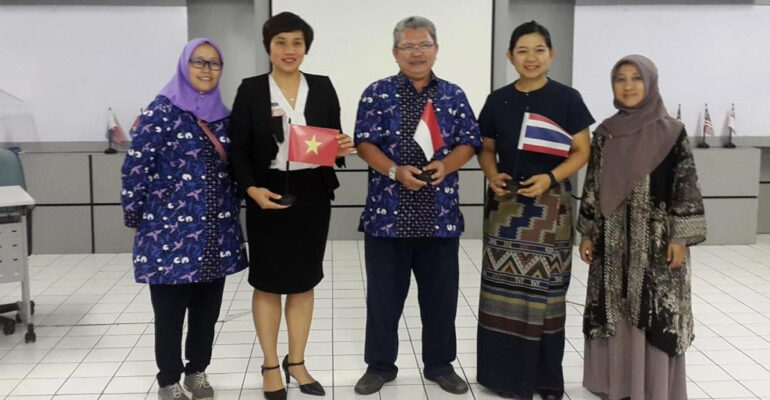IPB University Introduces Asian Indigenous Fish Products

Shrimp paste is inseparable from salted fish. Both often make a scene in an apartment in Europe or America. What else if it wasn’t for the pungent aroma when it was cooked. Although it has long lived in Europe, America or other parts of the world, the tongue of the Indonesian people still cannot be separated from shrimp paste or salted fish. Likewise, with those from other Asian countries, such as Vietnam and Thailand. The source of the pungent aroma in their kitchen is fish sauce.
Indonesia and Asia in general have a variety of indigenous food flavors and types. One of the characteristics is a variety of processed fishery products. Some of these traditional processed products are processed by salting and drying, but there are also those that undergo fermentation. Some fermented fish products besides fish sauce which are often found in various regions in Indonesia are bekasam. This product is less popular when compared to shrimp paste, but in some areas such as Palembang, Riau and Indramayu, bekasam is a “spice” to give a chili sauce and various other dishes. In addition, bekasam also be used as side dishes.
This processed fermented fish product can also be found in other Asian countries. In Thailand, the former is known as “pla-ra” or “pla-chom”, in Japan it is known as “heshiko” and “mum-tom” in Vietnam.
To get to know a wider range of traditional Asian fish preparations, the Department of Aquatic Product Technology (THP) of the Faculty of Fisheries and Marine Sciences, IPB University held a public lecture on “Indigenous Fish Processing Technology in Asia” at the Dramaga Campus in Bogor last July.
The public lecture presented two speakers namely Dr. Do Thi Yen from Hanoi University of Science and Technology, Vietnam and Dr. Nantipa Pansawat from Kasetsart University, Thailand.
Dr. Yen delivered a variety of traditional Vietnamese processed products, including fish sauce. Fish sauce is widely used in Vietnamese cuisine, so the demand for these products is high. One of the fish sauce products that they have commercialized is fish sauce made from shrimp.
Interestingly, the portion of shrimp used is not meat but only by-products from the shrimp processing industry. In addition, by-product in the form of shrimp carapace is also processed into chitin and chitosan. Chitin and chitosan production processes that have been using chemical processes have been replaced by biological processes using lactic acid bacteria, including Lactobacillus. This biological process is more environmentally friendly because of the lack of chemical waste produced.
Meanwhile, Dr. Nantipa explains various processed fisheries products typical of Thailand. Various processed fish products that have been developed, including smoked fish. Raw materials for smoking will affect the taste of the product produced. Therefore, a lot of research has been done to see the effect of various materials used in the fogging process and the taste of smoked fish produced.
“In addition to getting to know a variety of processed fish products typical of Thailand and Vietnam, this activity is expected to also be able to provide broader insights on technological developments and the development of traditional Asian processed products, especially from Thailand and Vietnam. In addition, this activity is also a bench marking of the development of fisheries product processing technology for the THP Department. In the future, we will also collaborate on research and development of processed fishery products,” said Dr. Luky Adrianto, Dean of FPIK IPB University. (RYS)



